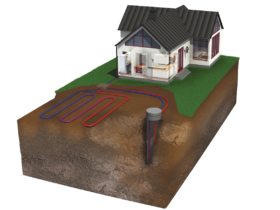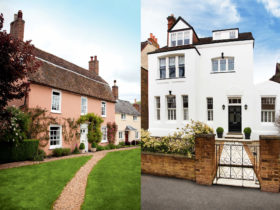
Learn from the experts with our online training course!
Use the code BUILD for 20% off
Learn from the experts with our online training course!
Use the code BUILD for 20% offA house that needs only a tiny amount of heating seems something of a miracle, yet it’s been a reality in Europe for several years.
We’ve been building some here too, albeit in small numbers. A Passivhaus is comfortable to live in, come summer or winter, requiring minimal heating thanks to its energy efficient construction.
According to the Passivhaus Trust, buildings achieve approximately a 75% reduction in space heating requirements, compared to standard practice for UK new build.
The Passivhaus concept was developed in Germany in 1988, and with over 20,000 buildings now completed it’s becoming an ever more common feature of new-builds across Europe.
The principle is to reduce the heat losses of a building so much that it hardly needs any heating at all. The sun, human occupants, household appliances and the warmth from extracted air cover a large part of the heating demand.
Construction standards include good levels of insulation with minimal thermal bridges and well thought-out uses of solar and internal gains.
Passivhaus standards
|
Since the houses are highly airtight, whole house mechanical ventilation systems are installed to provide excellent air quality, with highly efficient heat recovery.
Building this way means that traditional heating systems aren’t needed – a small unit, such as a woodburning stove, will cover any shortfall.
There are more than 50 Passivhaus projects underway in the UK, with many more designed using Passivhaus principles.
Hanse Haus built its first UK Passivhaus in Somerset. “The super-insulated shell and windows, together with a highly efficient ‘Paul’ mechanical ventilation heat recovery, take the annual heating consumption down to 13kWh/m2,” says Stephen Huber, from the Scottish Passive House Centre.
“By use of a modern heat pump and a solar thermal system, the primary energy demand for domestic hot water, heating and auxiliary electricity is cut down to 30kWh (per m2, per annum). This ensures very low running costs and the highest level of emission savings.”
Hanse Haus says that only on a very few cold days of winter heating is needed for its Passivhaus designs, and this is provided by a micro heat pump, while solar collectors heat domestic water.
“For a 1,800ft2 house, the consumption cost for heating and hot water would be just £32 per month, on average,” says Bruno Kleinheinz, the company’s technical director.
The estimated cost of a turn-key Hanse Haus certified Passivhaus is approximately £1,400 per m2, with completion within five to six weeks.
To promote Passivhaus in the UK a new advice and lobbying body, The Passivhaus Trust, a not-for-profit organisation, will focus on research education and policy campaigns.
“There is a phenomenal interest in Passivhaus around the world as a robust, proven and cost effective way to help us cut carbon within the build environment,” says Neil Cutland, director at The Passivhaus Trust.
The Trust aims to publish the first comprehensive directory and gallery of Passivhaus certificated projects this year.
Related contacts:Association of Environment Conscious Building: 0845 456 9773 www.aecb.net |
Top image: After a fruitless search for their perfect home in rural Scotland, John and Jeanette Fenwick decided to self-build their own Passivhaus instead. Read the full story


Comments are closed.